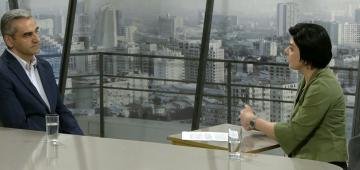 |
The Lemkin Institute blames the RA Prime Minister
The Lemkin Institute for Genocide Prevention accused the Prime Minister of Armenia for the narratives denying the Armenian Genocide. "Although we generally do not get involved in the internal affairs of states, as long as there is no threat of genocide, we must address the concerns arising from the recent statements of Armenian Prime Minister Nikol Pashinyan, which, in fact, deviate from the fundamental principles of genocide prevention, genocide recognition and transitional justice, and which are directly related to are the problems of national security of Armenia", says the foreword to the detailed 5-page report. Anna Sargsyan discussed this topic with Genocide expert Suren Manukyan.
|
 |
From Retreat democracy to demarcation
What is the basis of the illegality of the process carried out under the name of demarcation in the territory of Tavush region? Why does the RA government violate the RA Constitution and accuse those fighting against it of "playing politics"? What legal ways are there to implement the process of reproduction of the Armenia-Azerbaijan interstate border? Anna Sargsyan talked with the member of the Supreme Spiritual Council of the Mother See, doctor of legal sciences, professor Gevorg Danielyan.
|
 |
How many millions would we be today if Turkey had not committed the Armenian Genocide?
During the 70 years of Soviet Armenia, the population of Armenia increased fivefold. The population of Western Armenia before the genocide was 2.5 million, and if the genocide had not happened, then the population of Armenia could be about 13-15 million now.
Mikael Malkhasyan, candidate of historical sciences, specialist in historical demography, believes that the influence of the genocide still exists today, it is not just an event that happened 100 years ago, which affects 1.5 million people. The result of the genocide is that we have little opportunities today.
He claims that the bait of a recent public discussion about the number of Armenians subjected to genocide is a dangerous political narrative that can turn into a simplification and dissolution of the subject of international recognition of the Armenian Genocide, fair and legitimate claims.
|
 |
Armenia and Azerbaijan in international courts
The Institute of Armenian Studies has organized a scientific conference "Genocide and ethnic cleansing in the 21st century". The first report was on "The legal essence of the concepts of ethnic cleansing and genocide in the context of Azerbaijani crimes against Armenians". According to international law specialist Levon Gevorgyan, the depopulation of Artsakh is a crime against humanity and a continuation of the genocidal policy implemented by Turkey at the beginning of the 20th century. The speaker especially stressed the reckless mentality of canceling Armenia's lawsuits against Azerbaijan in the international courts these days within the framework of the supposed peace process. Outside the international judicial processes, the Armenian question is nothing more than textbook material. It is very important to formulate a demand for one's own authorities not to withdraw from judicial proceedings.
|
 |
Armenia finds itself in a complete blockade
Why does Armenia leave itself out of regional and larger economic and energy mega projects? They can be both economically beneficial and strengthen the country's geopolitical positions and ensure security. Today, as the world becomes Asia-centric, we are shifting the political vector to the West. Thus, is Armenia "opening up" or, on the contrary, "enclaving"? Why does Turkey need the "Zangezur Corridor" so much and whose project is it a part of? Anna Sargsyan discussed the topic with energy security expert, doctor of political sciences, professor Vahe Davtyan.
|
 |
Territorial, but whose integrity?
There are 3 power centers in our region: Turkey, Russia and Iran.
The main partner of the West here is Turkey, which acts directly against Armenia. The West is ready to support Armenia to counter threats from Russia and Iran, but Armenia is not threatened by Russia and Iran, but by Turkey and Azerbaijan. Actually, it is Turkey's agenda.
What does diversification of foreign policy mean? Anna Sargsyan discussed the topic with candidate of historical sciences Sergey Melkonyan.
|
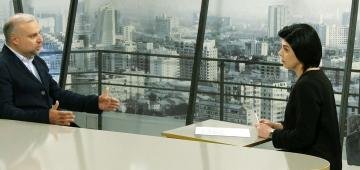 |
Why are war and defeat inevitable?
The main narrative of the political authorities after the war is that the events happening with Armenia are inevitable. For example, handing over the enclaves is inevitable because the Armenian side is weak. The government presents this weakness as an objective reality, but in reality it is a consequence of poor management and mismanagement of resources. There is a way to change the situation: effective management.
Anna Sargsyan discussed with Vahram Martirosyan, founder director of "Zangi" company, the difficult situation created around Armenia and the possibilities to get out of it.
|
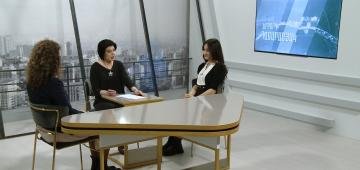 |
How do the people of Artsakh live in Armenia?The Caucasian Research Resource Center conducted and published a study on the integration of forcibly displaced Artsakh residents. It is noteworthy that our compatriots have found themselves in the status of "familiar foreigners" in Armenia. Anna Sargsyan discussed the topic with the authors of the study, Lilit Yezekyan and Mariam Babayan, who was also displaced from Artsakh after the 2020 war. |
 |
We are not ineligible, but we are at risk
"Artsakh. endangered heritage" trilingual picture book, which includes the Armenian historical-architectural heritage left in the occupied territories of Azerbaijan as a result of the 44-day war was published. Azerbaijan is now planning to destroy the Armenian trace at the state level.
Is the work of scientists used enough to protect the cultural and political rights of the Armenian people against Azerbaijani crimes? Anna Sargsyan discussed the topic with Raffi Kortoshyan, deputy director of the Foundation for the Study of Armenian Architecture.
|
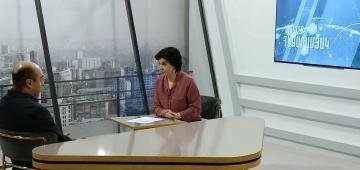 |
We are not weak, but we do not realize our strength
If Armenia continues to meet Azerbaijan's demands, it will very quickly self-dissolve, like the Nagorno Karabakh Republic. Why? We are offered peace, cooperation, prosperity, aren't we? Anna Sargsyan discussed the topic with political scientist Saro Saroyan.
|
 |
Not scared, but disorientedThe question where is our intelligentsia today has a simple answer: where we sent it: the suburbs and "Vernisage". What kind of society are we today? Are we under the influence of fear or are we simply undecided on what to do, what kind of state to build? What has the Artsakh conflict changed in our national behavior? Anna Sargsyan discussed the topic with YSU professor, sociologist, political scientist Artur Atanesyan. |
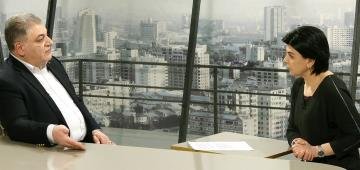 |
Why does Armenia question its existence?For quite some time now, the words state and motherland have a stable place in our daily hot news, but always with a question mark. Why does the state official of the Republic of Armenia question the meaning of the existence of the state? If the reason is the defeat in the war, then it will be done by the enemy. We are discussing with Ambassador Extraordinary and Plenipotentiary Vahagn Melikyan. Anna Sargsyan conducts the conversation. |

